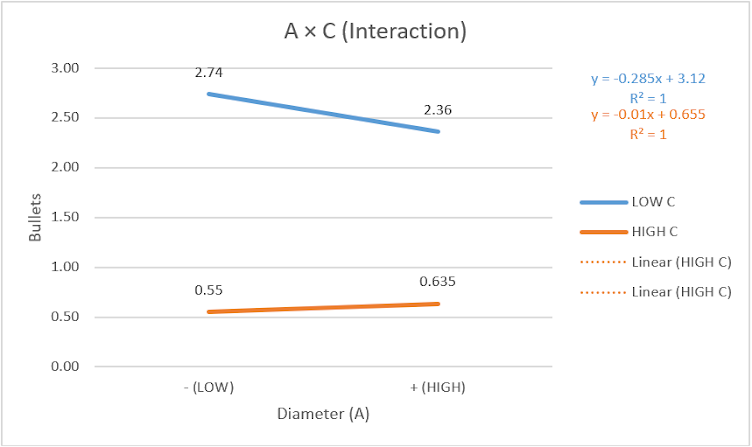Design of Experiment (DOE)
HELLO!😃
This is my first blog in this new term! Today, I will be sharing about what DOE is and I will be solving a case study using Full Factorial and Fractional Factorial data analysis. DOE is an abbreviation which stands for Design of Experiment.
What is DOE?
- A statistics-based approach to designing experiments
- A methodology to obtain knowledge of a complex, multi-variable process with the fewest trials possible
- An optimisation of the experimental process itself
- The backbone of any product design as well as any process/product improvement efforts
Case Study
What could be simpler than making microwave popcorn? Unfortunately, as everyone who has ever made popcorn know, it's nearly impossible to get every kernel of corn to pop. Often a considerable number of inedible "bullets" (un-popped kernels) remain at the bottom of the bag. What causes this loss of popcorn yield? In this case study, three factors were identified:
- Diameter of bowls to contain the corn, 10cm and 15cm
- Microwaving time, 4 minutes and 6 minutes
- Power setting of microwave, 75% and 100%
8 runs were performed with 100 grams of corn used in every experiments and the measured variable is the amount of "bullets" formed in grams and data collected are shown bellow:
Factor A = diameter
Factor B = microwaving time
Factor C = power
Full Factorial data analysis
1. Determine the effect of single factors and their ranking.
- When Diameter (Factor A) increases from 10cm to 15cm, the average mass of "bullets" increases from 1.353g to 1.790g.
- When Microwaving Time (Factor B) increases from 4 min to 6 min, the average mass of "bullets" decreases from 1.748g to 1.395g.
- When Power (Factor C) increases from 75% to 100%, the average mass of "bullets" decreases from 1.955g to 1.1875g.
Therefore, I can conclude that:
2. Determine the interaction effects.
For A x C interaction, the gradient differs slightly. This shows that there is a small interaction between Diameter (Factor A) and Power (Factor C)
3. Excel file
4. Conclusion
In conclusion, for Full Factorial data analysis, the power setting of the microwave is the most significant in decreasing the mass of "bullets".
To increase the yield of popcorn, run 6 is preffered since it has the lowest mass of "bullets".
Fractional Factorial data analysis
1. Determine the effect of single factors and their rankings.
I can determine that:
- When Diameter (Factor A) increases from 10cm to 15cm, the average mass of "bullets" increases from 0.423g to 1.37g.
- When Microwaving Time (Factor B) increases from 4 min to 6 min, the average mass of "bullets" increases from 0.828g to 0.965g.
- When Power (Factor C) increases from 75% to 100%, the average mass of "bullets" increases from 0.775g to 1.0175g.
Therefore, I can conclude that:
3. Conclusion
In conclusion, the results obtained using Fractional Factorial data analysis is the same as using Full Factorial data analysis as the rankings of each factors' significance in decreasing the mass of "bullets" is the same.
This proves that Fractional Factorial data analysis effective and more efficient compared to Full Factorial data analysis.
Learning Reflection
In tutorial lessons on DOE, I managed to learn how to create graphs on excel and how to select data for the graph. Additionally, I find the process of completing the case study fun and enjoyable as it teaches me how to analyse a given data. I also learned the difference in using Full Factorial data analysis vs Fractional Factorial data analysis. When using Fractional Factorial data analysis, not all of the possible treatments are chosen to still provide sufficient information to determine the factor effect. Fractional Factorial data analysis is actually more efficient and resource-effective than Full Factorial data analysis, but there is a risk of missing information.
In practical lesson on DOE, I had a lot of fun especially when we had our competition on whose group could knock down the most targets using their own catapults. The practical taught me about the mechanism behind a catapult; how its arms length, stop angle and the projectile weight affects the distance of where the projectile lands. For the group competition, my group and I were quite pessimistic and had only ONE ROUND of practice shots. We expected ourselves to perform badly. To our surprise, WE MANAGED TO HIT ALL TARGETS DOWN without even using all of the trial shots given!!! We had 2 more trial shots left. It felt as if we had just won a gold medal in the Olympics, we were elated. That moment will always be a memorable one and it will be one of my proudest moments in SP.













Comments
Post a Comment